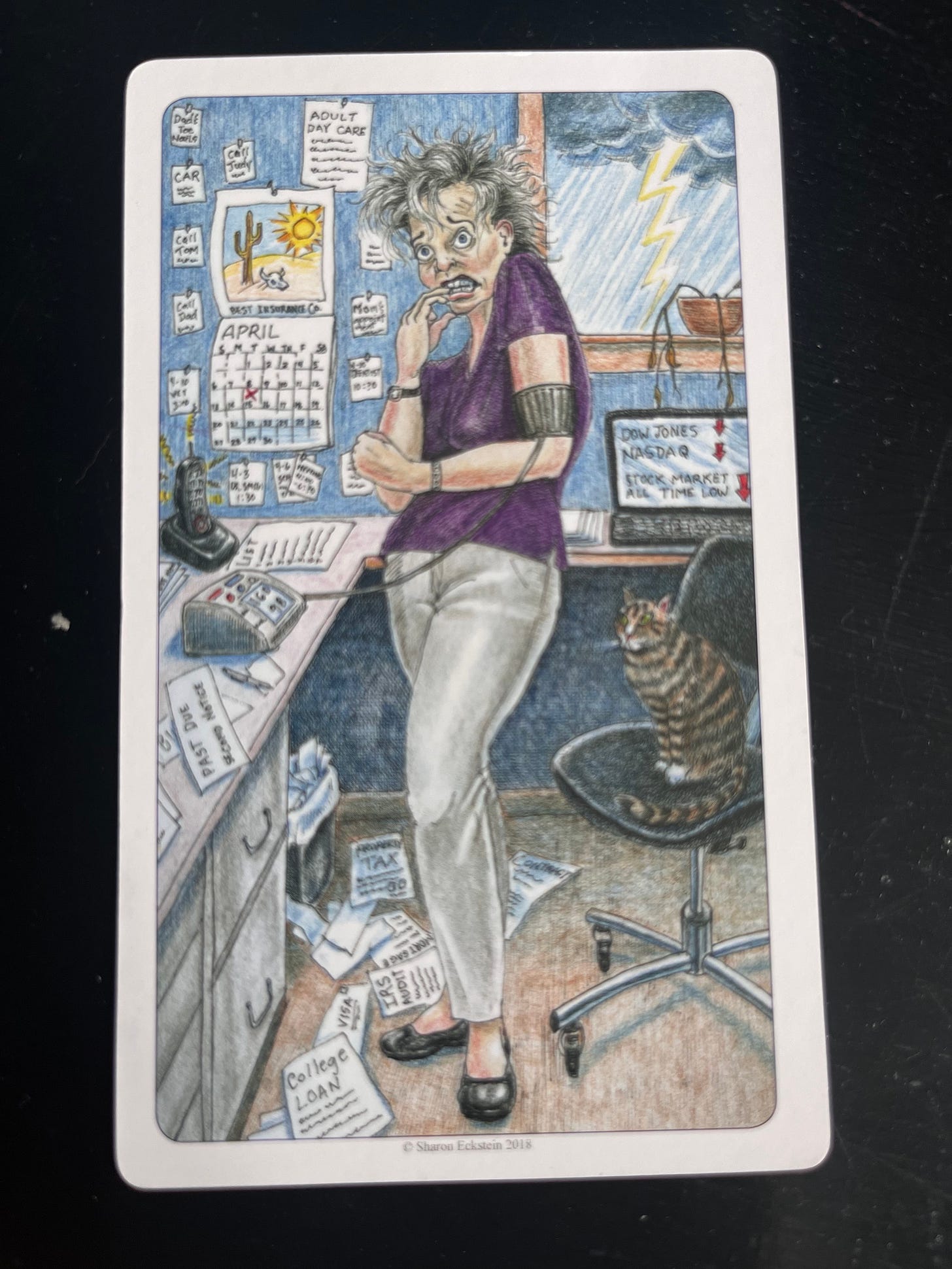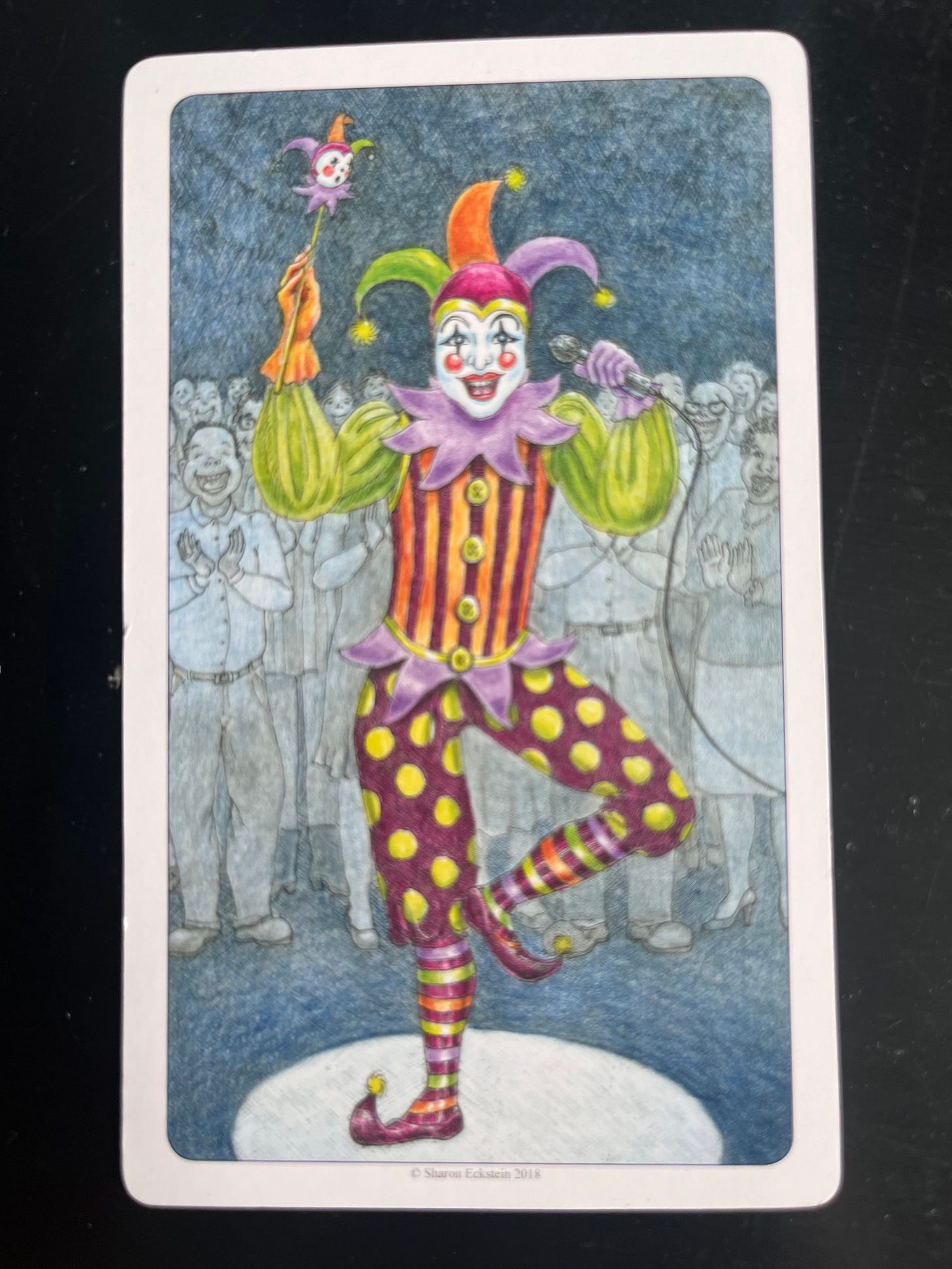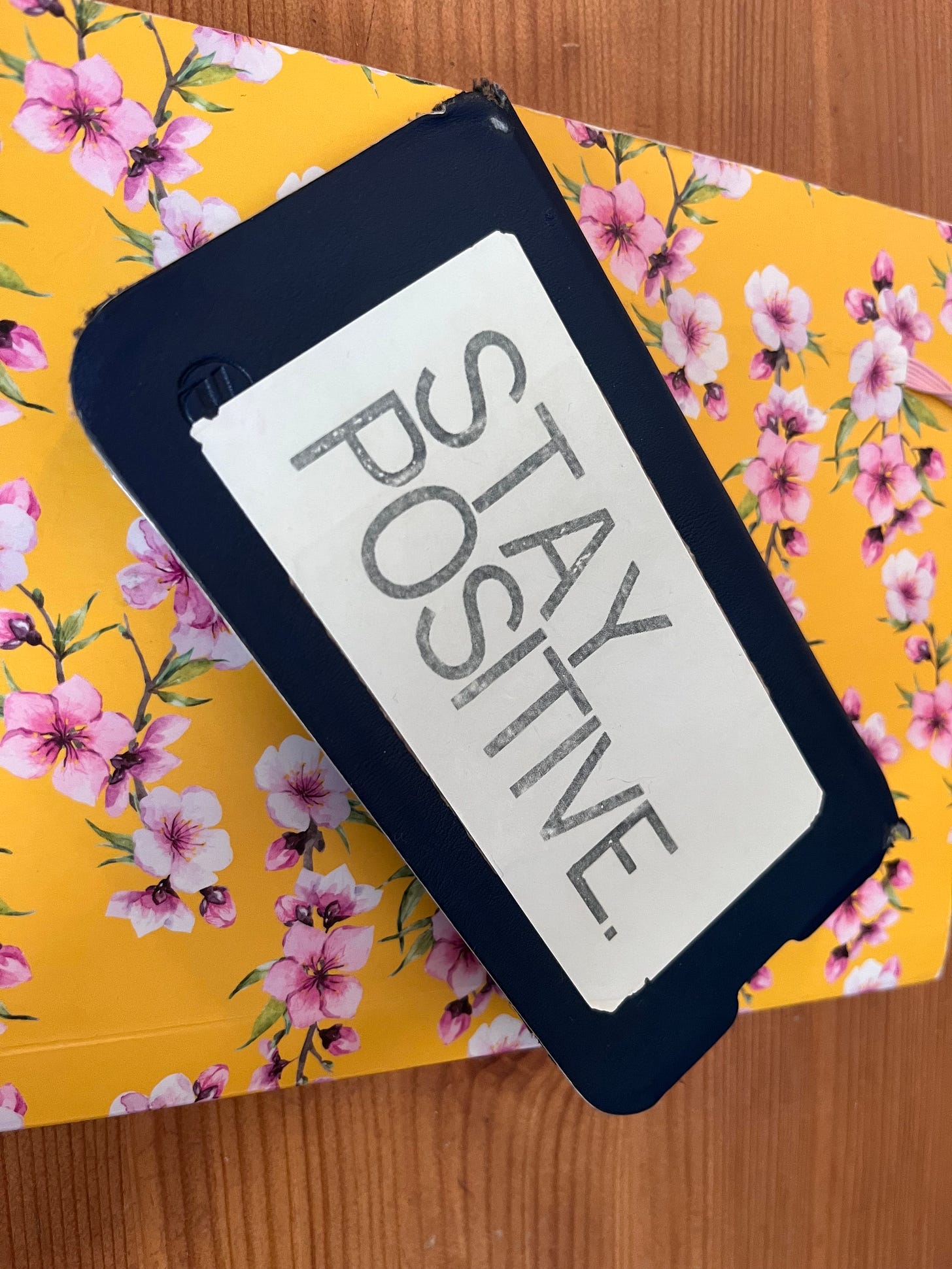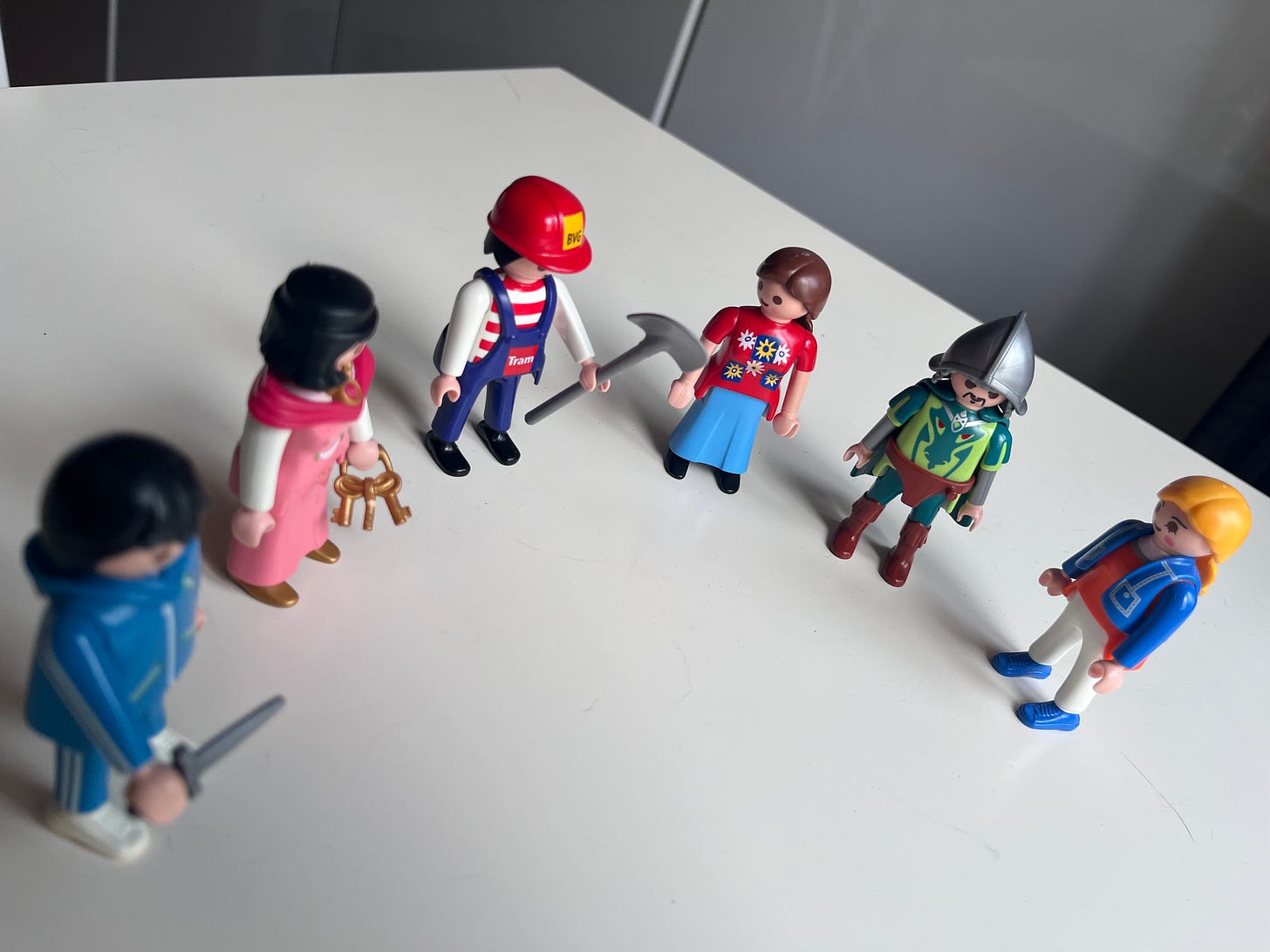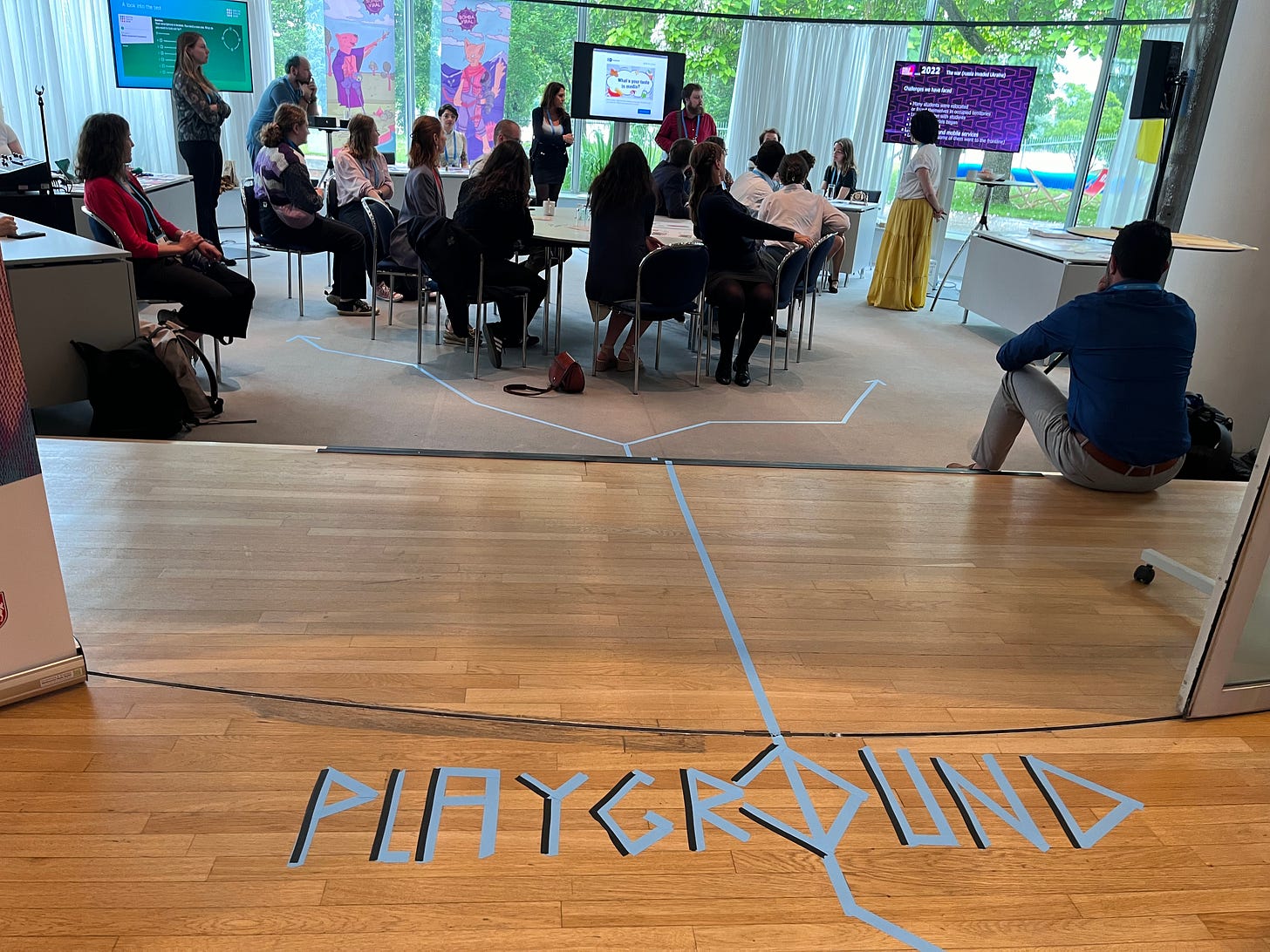“What does leadership mean to you?” This is the question I posed to a room of senior newsroom managers at a recent workshop. I asked them to pick a card with a picture that reflected their ideas about leadership. Here’s one they chose:
Most of the managers took cards showing harried figures multitasking or giving orders, which they associated with classic leadership traits like direction, planning or organisation, as well as empathy and vision.
One person had a surprising response: she picked a picture of a jester with a big grin. She explained that she sees her role as a manager of a big team of journalists as making sure people are having fun at work.
“I feel joy is underrated and almost a taboo word in many workplaces, considered something irrelevant, almost frivolous. But as a journalist, I’ve never worked better than in a joyful atmosphere, with people working hard and laughing at the same time, engaging in constructive discussions, learning one from the other.”
Laura Bonilla is editor-in-chief for Latin America for the French news agency AFP. She told me she had been advised to smile less if she wanted to be taken seriously.
“A colleague once told me not to smile at work, it’d made me look dumb. When I once told my boss in that same newsroom that a prospective new colleague knew how to work and have fun at the same time, he replied he was not looking for a joker,” she added.
Wanted: Fun at work
The conversation with Laura reminded me of a recruitment advert for a new CEO for the New Humanitarian, a publication that covers the international aid and development sector. The job description included this line:
“Nurture a culture of joy, pride, and excitement across the organisation. Ensure our team delivers while having fun at work; measure ambitions against the risk of burnout and overload, striking a balance that allows staff to find pleasure and sustainability in their work.”
That is the first and only time I have ever seen the word “joy”and “fun” in an advert for a media management position.
That job description made me want to work for or create an organisation like that, but I sense that cynics, especially hard-bitten journalists, might roll their eyes at the idea of finding “joy” at work, even if they might be open to a bit more pride and excitement on the job.
They would probably question that it is possible or even desirable to maintain a sunny outlook while reporting on suffering, violence and corruption. Of course a lot depends on the personality of the manager. But a positive perspective can be cultivated, even in the toughest of situations.
“I cannot hide who I am so many hours a day, though I did try for many years” Laura said. “I feel that part of that joy comes from feeling I am so privileged to have such an interesting job in these challenging times for our industry. Sometimes just one person with a sunny disposition is enough to irradiate the rest: joy is contagious.”
But the leader’s personality is not everything. Another key to a happy workplace is trust.
Happy Ex-Convicts
James Timpson, former chief executive of a UK chain of key-cutting shops, now Minister for Prisons in the new Labour government, believes that trusting his staff boosts what he calls the “happy index”. This is the only question he asks his employees on a regular basis: “On a scale of 1-10, how happy are you with your area team?” He says the shops run by staff who are happiest are routinely the most profitable.
“This is a much better way of judging how good a leader someone is, and beats profit, sales targets and all the other KPI’s people love, and we hate,” said Timpson.
Timpson also has a radical approach to who he is prepared to trust. About 10% of the Timpson workforce is made up of people with criminal convictions.
Sceptical journalists might sneer at the positive view of humanity that Timpson promotes. Perhaps that is why, when reporters are promoted to leadership positions they often struggle to trust their teams, becoming controlling micromanagers.
“What made me a good reporter is that I never trusted anything … Now I’m having to unlearn so much of that because you do have to trust when you’re a manager.” Yukari Kane, co-founder and CEO of the Prison Journalism Project, told the International Journalism Festival.
Fun boosts learning too
A touch of British self depreciation can help build trust when I am confronted with sceptical attitudes from journalists and managers in my training, coaching and facilitation. Given the right tools, it is possible to have fun even when we are dealing with heavy topics like mental health, gender equality and conflict management.
Indeed, there is plenty of research to show that play and humour help enhance learning, productivity and engagement in many contexts. So I have developed a jigsaw puzzle exercise to teach people about the different stages of burnout, and I use PlayMobil figures saved from my kids’ toy box to help workshop participants get a new perspective on conflicts in their teams.
Even a tradition-rich state broadcaster like Italy’s RAI benefited from its wood-panelled conference room being plastered with PostIts when I helped facilitate a playful workshop on improving gender equality in reporting on women politicians. It certainly beats sitting around a conference table for hours.
The Joy of News
Will Storey, senior managing producer at Business Insider, thinks the news business should be using the same insights to make journalism more engaging. He says that more people spend time on the New York Times games app than on their news and cooking apps and notes that young people are much more open to paying for games than paying for news.
Gamification is already happening in media literacy, where educators are using games and competitions to teach young people about the dangers of disinformation.
Several projects set up a “playground” at the Global Media Forum conference where I learned about propaganda and hate speech by playing a board game version of “Dungeons and Dragons”.
Which brings me back to joy: the conference took place in Bonn, the birthplace of Beethoven, which has branded itself a “joyful” city due to the composer’s Ode to Joy, inspired by the poem by Friedrich Schiller.
So I will finish with part of an adaptation of Schiller’s poem by former U.S. Poet Laureate Tracy K. Smith:
Joy like water, milk of mothers.
Kind and wicked all deserve
Joy’s compassion freely given,
Joy which can’t be sold or earned.
In the depths of blackest soil
In the lightless atmosphere
In the atom and the ether,
Animating all that is.Let us feel it, let us heed it,
Let us seek its deepest kiss.
Let us live our brief lives mining
That which joy alone can give.
What I am reading:
Love in the Time of Cholera - Gabriel Garcia Marquez - This classic has been sitting on my shelves for years and I struggled with the story of unrequited love set in the Caribbean at the turn of the 20th century. I found it hard to develop much sympathy for any of the main characters, particularly the supposedly heartbroken Florentino Ariza, who has hundreds of affairs after he is rejected by his teenage sweetheart Fermina, culminating in his seduction of a 14-year-old girl when he is an old man.
Nudge - Richard H. Thaler & Cass R. Sunstein - This book has inspired policy makers, financiers and marketers to become “choice architects” who “nudge” people’s decisions about health, wealth and happiness by often tiny changes to wording, design or framing. It was an insightful read but its authors, who describe themselves as libertarian paternalists, spend too much of the book trying to convince opponents of government intervention of the benefits of nudges.




